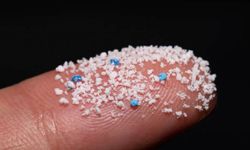Unfortunately, the life of the mother of 44 children has not been very easy. Her parents 'sold' Nabatanzi into marriage at the age of 12. After a short time, Nabatanzi became pregnant and gave birth to her first child at the age of 13. She went on to give birth to twins, triplets and quadruplets.
Thinking this was a problem, Nabatanzi went to the health center. Doctors investigated the situation and discovered that Nabatanzi had severe ovarian hyperstimulation syndrome, which is extremely rare.
Doctors explained to Nabatanzi that she was very fertile and the only thing she could do to reduce the fertility level in her ovaries was to give birth more often. In short, no family planning is working for the 44-year-old woman and the only way to relieve her body is to give birth.
There is currently no treatment for her abnormally large ovaries. Large ovaries cause a condition called hyperovulation. Although there are treatments for this, they are difficult to access in Nabatanzi's geography.
According to Dr. Charles Kiggundu, a gynecologist at a hospital in Kampala, Uganda, Nabatanzi's condition is hereditary. By the way, all of Nabatanzi's children are from her husband, who left her in 2016. Speaking about her ex-husband, she said, "I grew up in tears. My husband made me suffer a lot. All my time was spent taking care of my children and working to earn money."
Her children see their mother as a hero. Nabatanzi did everything she could to take care of her children. She collected scrap, worked as a hairdresser and sold herbal medicine.
Her eldest child, Ivan, in his mid-20s, had to drop out of school when his mother could no longer afford it. Ivan says, "Work oppresses my mother. We help as much as we can with things like cooking and laundry. But she still carries the entire burden of the family."
Severe ovarian hyperstimulation syndrome is an extremely rare disease. It poses a serious threat to people's lives. It can cause fluid to build up in the abdomen or chest, blood clots, kidney failure and respiratory problems.
















